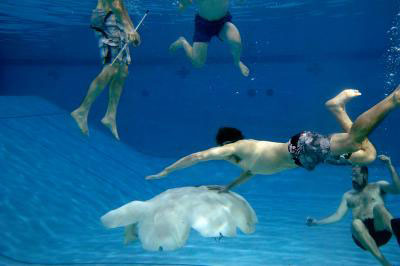 Virginia Tech College of Engineering researchers have unveiled a life-like, autonomous robotic jellyfish the size and weight of a grown man, 5 foot 7 inches in length and weighing 170 pounds.
Virginia Tech College of Engineering researchers have unveiled a life-like, autonomous robotic jellyfish the size and weight of a grown man, 5 foot 7 inches in length and weighing 170 pounds.
Mar 28th, 2013
Read more
Swarms of robots acting together to carry out jobs could provide new opportunities for humans to harness the power of machines.
Mar 28th, 2013
Read more
This new title aims to provide an accessible, consolidated forum where an accumulation of peer-reviewed scientific knowledge on the design, development, testing, and applications of unmanned vehicle systems (UVS) in the air, on and under the water, and on land is published and disseminated. The journal is broadly themed into four main areas: civil, environmental, military, and engineering technology; contributions are invited from recognized researchers and practitioners in academia, government and industry from all over the world.
Mar 28th, 2013
Read more
Carrying out complicated sequences of actions in a cluttered, dynamic environment such as a home will require robots to be more aware of what they do not know, and therefore need to find out.
Mar 27th, 2013
Read more
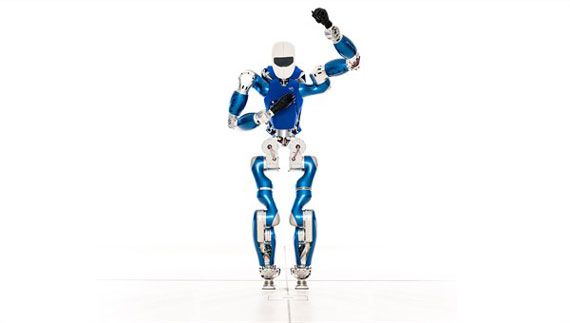 TOrque controlled humanoid RObot (TORO), the German Aerospace Center's walking machine, has become more human-like - an upper body, a head with camera eyes and arms have been added. TORO is now complete, with forearms and hands with sensors and flexible joints that allow it to respond to its environment with exceptional sensitivity.
TOrque controlled humanoid RObot (TORO), the German Aerospace Center's walking machine, has become more human-like - an upper body, a head with camera eyes and arms have been added. TORO is now complete, with forearms and hands with sensors and flexible joints that allow it to respond to its environment with exceptional sensitivity.
Mar 26th, 2013
Read more
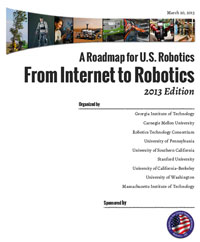 Last week, the Robotics Caucus Advisory Committee of the U.S. Congress hosted a briefing to present A Roadmap for U.S. Robotics: From Internet to Robotics - 2013 edition.
Last week, the Robotics Caucus Advisory Committee of the U.S. Congress hosted a briefing to present A Roadmap for U.S. Robotics: From Internet to Robotics - 2013 edition.
Mar 26th, 2013
Read more
To help save time and money, and improve the accuracy and quality of cargo inspections, an EU-funded research project has developed a fleet of remote-controlled robots that crawl through cargo ships in search of cracks, corrosion and other defects.
Mar 26th, 2013
Read more
New book, 'Robot Futures', foresees society that will be shaped by ubiquitous robots.
Mar 25th, 2013
Read more
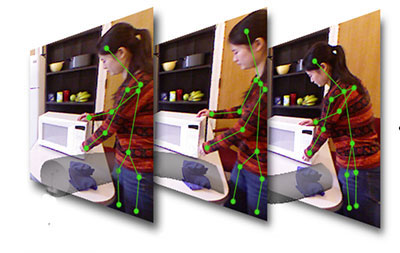 Robots can observe human behavior and - like a human baby - deduce a reasonable approach to handling specific objects.
Robots can observe human behavior and - like a human baby - deduce a reasonable approach to handling specific objects.
Mar 21st, 2013
Read more
 Robots have helped humans navigate outer space, land on the moon and explore Mars - but they can still get stuck in the sand. Carnegie Mellon University's internationally renowned roboticist, William Whittaker, is leading a new NASA-funded study to keep them moving forward.
Robots have helped humans navigate outer space, land on the moon and explore Mars - but they can still get stuck in the sand. Carnegie Mellon University's internationally renowned roboticist, William Whittaker, is leading a new NASA-funded study to keep them moving forward.
Mar 21st, 2013
Read more
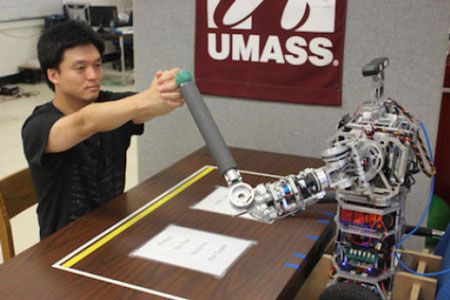 In one of the earliest experiments using a humanoid robot to deliver speech and physical therapy to a stroke patient, researchers at the University of Massachusetts Amherst saw notable speech and physical therapy gains and significant improvement in quality of life.
In one of the earliest experiments using a humanoid robot to deliver speech and physical therapy to a stroke patient, researchers at the University of Massachusetts Amherst saw notable speech and physical therapy gains and significant improvement in quality of life.
Mar 21st, 2013
Read more
A new way of reasoning about what happens when a robot's limb strikes an object could lead to more efficient and reliable robotic-control systems.
Mar 21st, 2013
Read more
Automated tools aim to make it easier to teach a computer than to program it.
Mar 20th, 2013
Read more
 Robots are being used more widely than expected in a variety of sectors, and the trend is likely to continue with robotics becoming as ubiquitous as computer technology over the next 15 years.
Robots are being used more widely than expected in a variety of sectors, and the trend is likely to continue with robotics becoming as ubiquitous as computer technology over the next 15 years.
Mar 20th, 2013
Read more
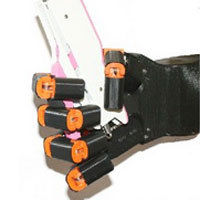 An artificial hand capable of performing almost all of the different types of grips on everyday objects with a single motor and, due to the simplicity of its structure, robustness and low cost, is destined to revolutionize not only the world of prosthetic and robotic hands but advance other technologies as well.
An artificial hand capable of performing almost all of the different types of grips on everyday objects with a single motor and, due to the simplicity of its structure, robustness and low cost, is destined to revolutionize not only the world of prosthetic and robotic hands but advance other technologies as well.
Mar 19th, 2013
Read more
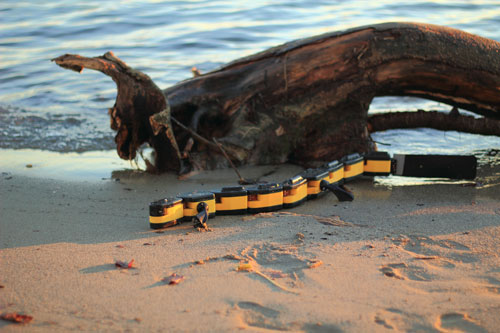 The folks at ETH Zurich's Biorobotics Laboratory have upgraded their robotic salamnder: Meet Salamandra robotica II, the new generation of our amphibious salamander-like robot.
The folks at ETH Zurich's Biorobotics Laboratory have upgraded their robotic salamnder: Meet Salamandra robotica II, the new generation of our amphibious salamander-like robot.
Mar 19th, 2013
Read more
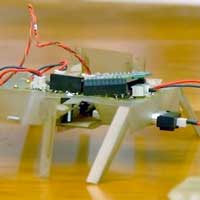 Average person could design, customize and print a specialized robot in a matter of hours.
Average person could design, customize and print a specialized robot in a matter of hours.
Mar 18th, 2013
Read more
Bristlebots are robots without sensors or brains that do things that robots without sensors or brains do. As it turns out, this is a lot more than you might expect, since researchers at Harvard have shown that if you stick enough of them in a small space, they self-organize into swarms.
Mar 15th, 2013
Read more
 Virginia Tech College of Engineering researchers have unveiled a life-like, autonomous robotic jellyfish the size and weight of a grown man, 5 foot 7 inches in length and weighing 170 pounds.
Virginia Tech College of Engineering researchers have unveiled a life-like, autonomous robotic jellyfish the size and weight of a grown man, 5 foot 7 inches in length and weighing 170 pounds.
 Subscribe to our Robotics, AI & SmartTech News feed
Subscribe to our Robotics, AI & SmartTech News feed







